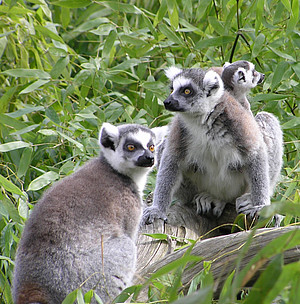Molecular evolution of the Strepsirrhini

The strepsirrhines represent one of the two suborders of the order primates. They are said to be more "primitive" than other primates, because some of their anatomical characteristics are found in some other mammals, but not in haplorrhines. For instance, the tapetum is a layer in the retina of the eye that reflects light and enhances night vision. Furthermore, strepsirrhines have a moist rhinarium (as in dogs) which enhances the perception of odours. In contrast to the Haplorrhini, strepsirrhines have no closed orbita and at least four nipples.
The Strepsirrhini are divided into three major groups; the Loriformes which are distributed over wide ranges of Africa and Asia, and the Lemuriformes and Chiromyiformes, both endemic to Madagascar.
Based on their biogeographic distribution, there are many interesting questions about the colonisation of the two continents Africa and Asia and the island of Madagascar by strepsirrhines. A highlight is the phylogenetic position of the bizarre aye-aye (Chiromyiformes, Daubentonia madagascariensis) and the question how often Madagascar was colonised by strepsirrhines. Previous studies based on genetics, morphology or vocalisation failed to solve these questions.
To get more information on this topic, two different molecular methods are applied. (I) We analyse sequences of the mitochondrial cytochrome b gene to establish a theory about strepsirrhine evolution. Furthermore, these data can be used to evaluate the taxonomic status of strepsirrhine taxa and to date specific branching events. (II) We search for rare genomic exchanges in strepsirrhine genomes such as transposition events to verify specific phylogenetic relationships. If two taxa exhibit the integration of such elements at corresponding positions in the genome, it can be expected that both taxa are derived from a common ancestor. Within strepsirrhines, Alu and tRNA-derived SINEs are probably the best type of transposition events to solve taxonomic as well as biogeographic questions.
Read more in Roos et al. (2004).

